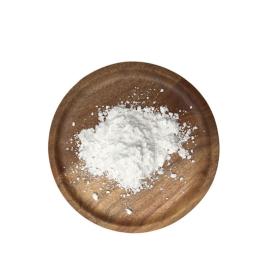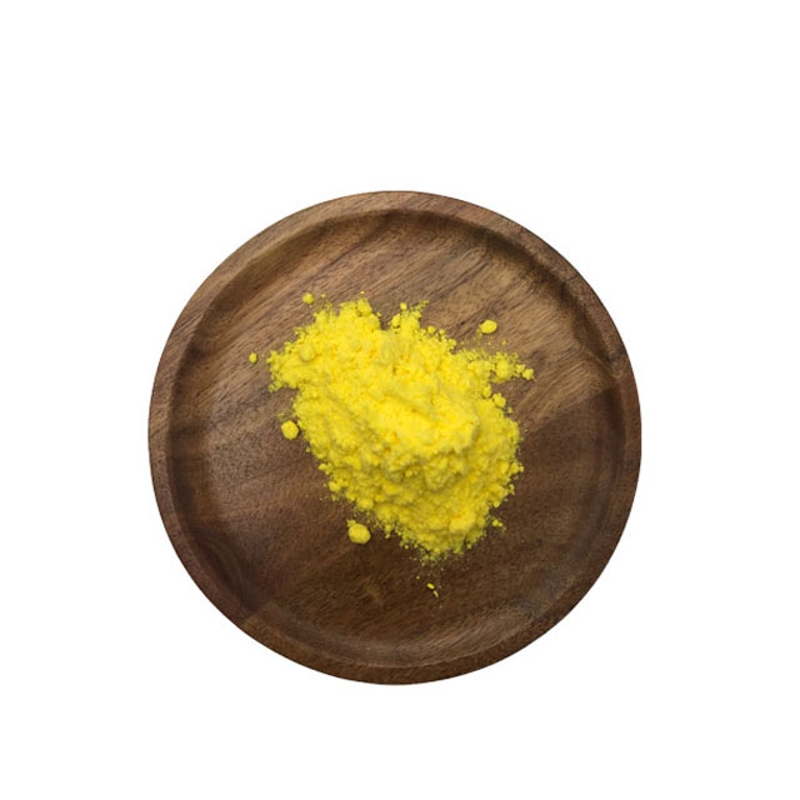-
Categories
-
Pharmaceutical Intermediates
-
Active Pharmaceutical Ingredients
-
Food Additives
- Industrial Coatings
- Agrochemicals
- Dyes and Pigments
- Surfactant
- Flavors and Fragrances
- Chemical Reagents
- Catalyst and Auxiliary
- Natural Products
- Inorganic Chemistry
-
Organic Chemistry
-
Biochemical Engineering
- Analytical Chemistry
- Cosmetic Ingredient
-
Pharmaceutical Intermediates
Promotion
ECHEMI Mall
Wholesale
Weekly Price
Exhibition
News
-
Trade Service
On October 27, 2022, the "CSCO Autologous Transplantation Working Group 2022 Tour - Shanghai Station" hosted by the Chinese Society of Clinical Oncology (CSCO), CSCO Lymphoma Expert Committee, CSCO Leukemia Expert Committee, CSCO Autologous Hematopoietic Stem Cell Transplantation Working Group, and undertaken by Shanghai Hematopoietic Stem Cell Transplantation Alliance was successfully held
online.
Professor Ma Jun of Harbin Institute of Hematology and Oncology, Professor Zhu Jun of Peking University Cancer Hospital, and Professor Song Xianmin of the First People's Hospital Affiliated to Shanghai Jiao Tong University served as the chairmen of the conference, and invited well-known experts in the field to give wonderful reports and discussions to discuss the current status and progress of autologous hematopoietic stem cell transplantation (ASCT) in China
。 This article organizes the key contents of the conference for the readers
.
At the beginning of the meeting, Professor Song Xianmin, Executive Chairman of the Conference, presided over the opening ceremony and extended a warm welcome and heartfelt thanks
to all participants.
Subsequently, Professor Ma Jun, chairman of the conference, delivered an opening speech, saying that ASCT is the main treatment for multiple myeloma (MM), lymphoma and other hematological malignancies, and there is still a big gap
between ASCT work in China and Western countries such as Europe and the United States 。 Shanghai colleagues have developed rapidly and worked well in ASCT, and established the Shanghai Hematopoietic Stem Cell Transplantation Alliance, hoping to promote the standardization of ASCT, improve the application rate and success rate of ASCT in MM and lymphoma, and promote the development and progress
of ASCT through this CSCO autologous transplantation working group tour.
I also wish this meeting a complete success
.
Professor Song Xianmin presided over the opening ceremony
Professor Ma Jun delivered the opening speech
After the opening ceremony, the academic session followed
.
The academic report part of the first session was presided over by Professor Yang Jianmin of the First Affiliated Hospital of Naval Medical University.
Professor Yang Jianmin served as the chair of the first session
Professor Wang Xiaopei of Peking University Cancer Hospital gave a report entitled "Current Status of Autologous Transplantation in China (2022)".
Professor Wang Xiaopei introduced that at present, there is a big gap between China's autologous transplantation and Europe, the United States, Japan, South Korea and other countries, and the development of various parts of the country is uneven, the overall lymphoma autologous transplantation utilization rate in China is 2.
4%, but in Beijing and Tianjin is 12.
6% and 7.
5%, while Guangxi and Heilongjiang are only 0.
4% and 0.
3%.
It is gratifying that with the deepening of the understanding of autologous transplantation, the enthusiasm of many domestic centers to participate has increased rapidly, and the choice of drugs for autologous transplantation has become increasingly abundant, which will be conducive to the development
of autologous transplantation 。 In the future, the development of autologous transplantation will attach importance to the cooperation between departments, departments and hospitals, actively optimize innovation while being down-to-earth, optimize the structure of existing transplant centers, improve the transplantation capacity of middle-level hospitals, and actively carry out new attempts, such as exploring secondary transplantation, optimizing pretreatment programs, and "strong cooperation" with new therapies such as PD-1, bispecific antibodies, CAR-T, etc.
, and work together to improve the efficacy of MM and lymphoma patients and strive for
。
Professor Wang Xiaopei gave a report
In the discussion session, Professor Yang Jianmin and Professor Wang Xiaopei discussed the application of the "Chinese Hematopoietic Stem Cell Transplant Registration" data, and suggested that the collected data should be used to carry out retrospective research to make it more valuable
.
Professor Hu Jiong of Ruijin Hospital, Shanghai Jiao Tong University School of Medicine, proposed that the thoughts and prospects on autologous transplantation in Professor Wang Xiaopei's report could be compiled into documents for wider dissemination to provide reference
for major centers to carry out autologous transplantation.
The second session was chaired
by Professor Hu Jiong.
Professor Hu Jiong chaired the second session
Professor Wang Libing, the First Affiliated Hospital of Naval Military Medical University, shared the topic of "Autologous hematopoietic stem cell transplantation in the treatment of diffuse large B-cell lymphoma (DLBCL)", combined with classic research and his own experience, from ASCT treatment of R/R DLLBCL, first-line treatment of DLBCL, and combined CAR-T treatment of R/R DLBCL
.
Professor Wang Libing pointed out that even in the era of rapid development of CAR-T cell therapy, high-dose chemotherapy (HDT) combined with ASCT is still the standard treatment
for patients with R/R DLBCL.
ASCT combined with CAR-T in the treatment of R/R DLBCL patients can play a synergistic effect - HDT-ASCT can reduce tumor burden and reduce tumor microenvironment inhibition; CAR-T treatment removes residual tumor cells while immune surveillance prevents recurrence
.
The combination of the two is beneficial to improve the disease remission rate and reduce the recurrence rate
.
In addition, the researchers also explored the first-line treatment of DLBCL with ASCT, and some studies have shown that for patients with high IPI scores, the first-line treatment of autologous transplantation shows certain survival advantages, but the results of different studies are different, and the current use of ASCT for first-line consolidation therapy of high-risk patients is still controversial, and more research is
needed.
Professor Wang Libing gave a report
During the discussion, Professor Hu Jiong and Professor Hao Siguo of Xinhua Hospital, Shanghai Jiao Tong University School of Medicine, discussed the "Factors Related to the Success or Failure of CAR-T and ASCT Combination Therapy", "How CAR-T and ASCT are combined, which comes first", and "Whether the efficacy of CAR-T and ASCT can be improved through maintenance therapy after combination therapy" Professor Wang Libing conducted in-depth discussions and agreed that the combination of CAR-T and ASCT is worth further exploration, and hopes to carry out more related work
with the support of hematopoietic stem cell transplantation alliances and working groups.
The third part of the academic report was chaired
by Professor Hao Siguo.
Professor Hao Siguo served as the chair of the third session
Professor Jiang Hua of Shanghai Fourth People's Hospital affiliated to Tongji University elaborated on the progress of autologous transplantation in the treatment of myeloma, Professor Jiang Hua According to statistics, from 2006 to 2015, the number of ASCT patients in the world increased by 107%, but the use rate of ASCT in China is at a low level, and the application of ASCT in MM is significantly lower than the application in lymphoma, and it is necessary to vigorously improve the application
of ASCT in the field of MM in China 。 Although new drugs continue to emerge, from the evidence-based medical evidence at home and abroad, the status of HDT-ASCT is still unshakable, and new drugs combined with first-line ASCT are still the best treatment mode for
patients with newly diagnosed MM (NDMM).
Moreover, studies have shown that elderly and patients with impaired renal function MM can also benefit from ASCT and have a good safety profile
.
Overall, both standard- and high-risk patients benefit from ASCT for long-term survival and reduced risk of
recurrence.
It is believed that with the accumulation of experience, the application of ASCT can gradually be extended to more people
.
Professor Jiang Hua made a report
During the discussion, Professor Wang Ling, Professor Hao Siguo and Professor Jiang Hua of Ruijin Hospital affiliated to Shanghai Jiao Tong University School of Medicine discussed the issues of "maintenance therapy after ASCT" and "second autologous transplantation", Professor Jiang Hua said that maintenance therapy is usually performed after ASCT.
The maintenance regimen
is selected according to the individual situation of the patient.
Professor Hao Siguo talked about the possibility of trying a second transplant for high-risk patients who have not achieved a complete response (CR) after the first transplant and can collect enough stem cells, and look forward to more data support
.
The fourth session was chaired by Professor Chen Jing of
Shanghai Children's Medical Center.
Professor Chen Jing served as the chair of the fourth session
Professor Wang Ling shared the "New Progress in Hematopoietic Stem Cell Mobilization", which analyzed in detail the high-risk factors affecting peripheral stem cell mobilization and the means of
effective mobilization.
Professor Wang Ling said that ASCT is an important and effective treatment for lymphoma and MM and other hematological cancers, which significantly improves the prognosis
of patients.
Effective mobilization and high-quality collection of peripheral blood stem cells are key links to ensure the success of ASCT and post-transplantation outcomes, and studies have shown that good mobilization can significantly improve the long-term survival
of patients after ASCT.
Poor mobilization or failure is related to baseline treatment, bone marrow involvement, age, and comorbidities, as well as low CD34+ cell counts, thrombocytopenia, and low CD34+ cell counts in peripheral blood before apheresis
.
It also indicates that different mobilization strategies have differences in the level of tumor cell contamination in grafts, and the impact of tumor cell contamination in grafts on long-term safety and clinical outcomes is still controversial
.
Finally, Professor Wang Ling shared the new selection of ASCT mobilizer and typical cases
of the center.
Professor Wang Ling made a report
During the discussion, Professor Chen Jing had an in-depth discussion with Professor Wang Ling on topics such as "control of the time and place of autologous transplantation stem cell collection", "balance between tumor cell contamination and mobilization effect", "how to avoid stem cell collection pollution", "mobilization effect of the new stem cell mobilizer Purusafo", and shared the clinical experience of children's stem cell collection.
The academic atmosphere is strong
.
At the end of the meeting, Professor Song Xianmin summarized the conference, saying that the meeting was rich in content and gained a lot, and thanked all the experts for their wonderful reports and heated discussions
.
At present, the development of ASCT still needs to be improved, the road ahead is long, and everyone needs to work together to promote the development of ASCT and bring more benefits to hematological cancer patients in the future! Looking forward to seeing you again next time!
Professor Song Xianmin made a summary of the meeting
Disclaimer: This platform aims to deliver more medical information
to healthcare professionals.
The content published on this platform cannot replace professional medical guidance in any way, nor should it be regarded as diagnosis and treatment advice
.
If such information is used for purposes other than understanding medical information, this platform does not assume relevant responsibilities
.
The content published by this platform does not mean that it agrees with its description and views
.
If copyright issues are involved, please contact us and we will deal with it
as soon as possible.
Poke "Read Original" to see more







